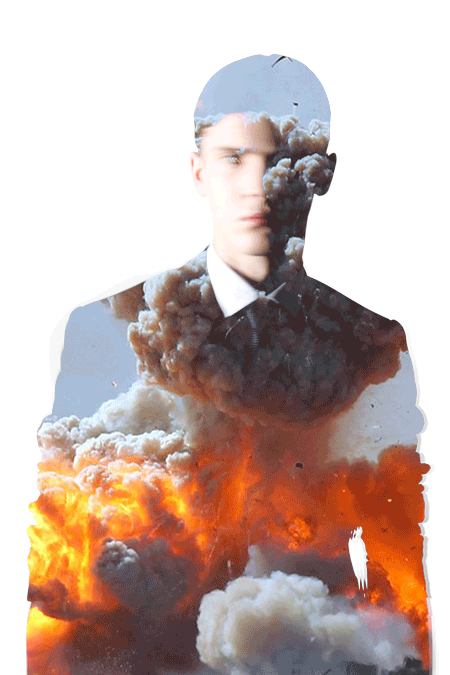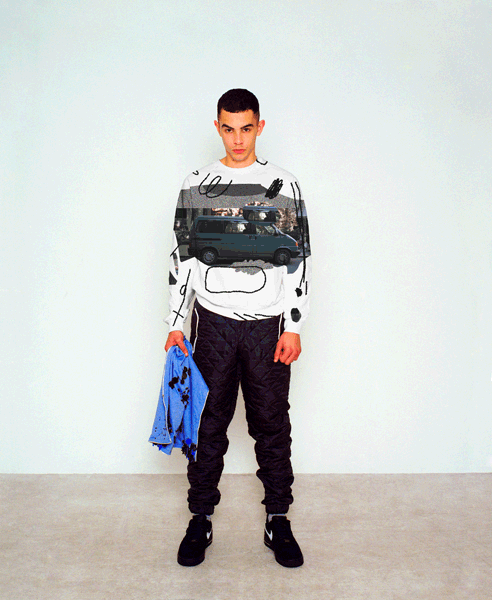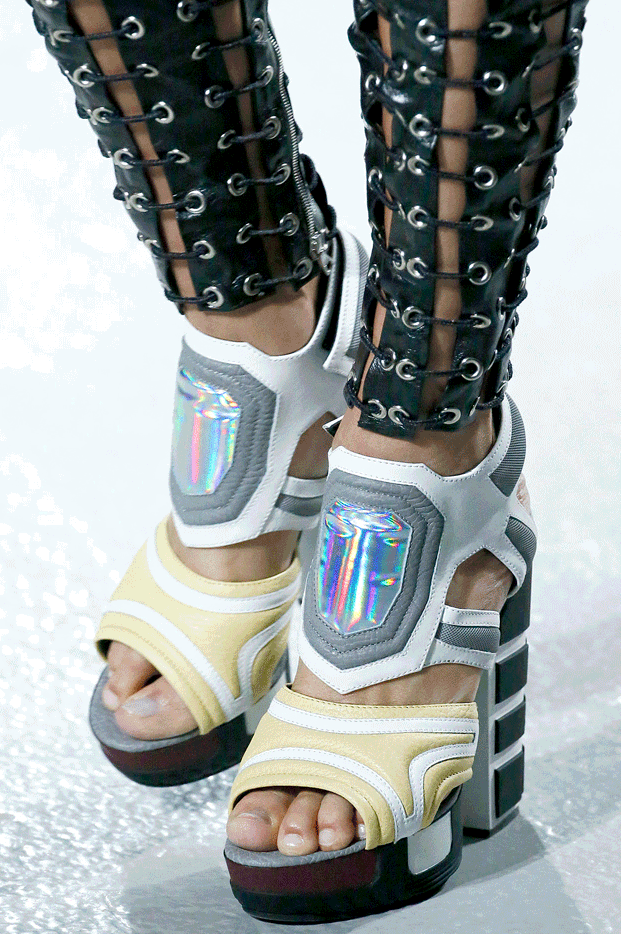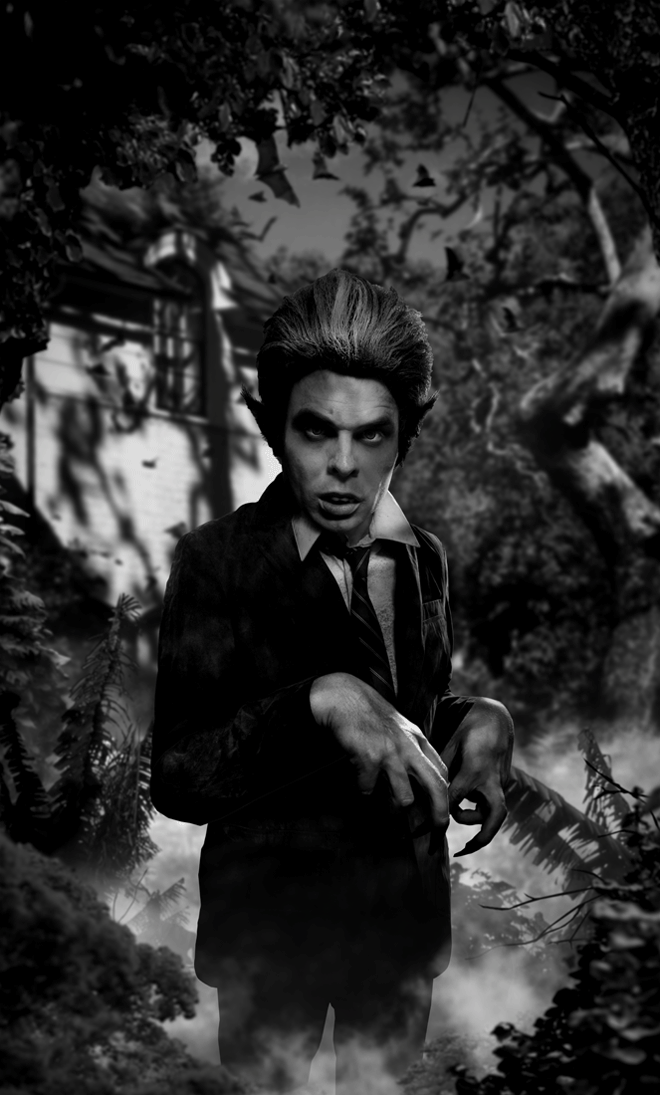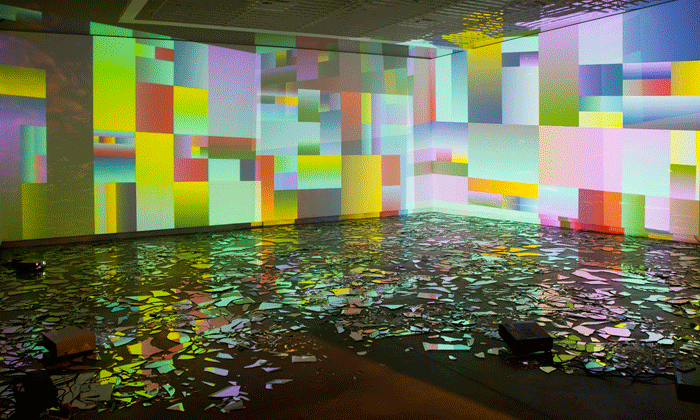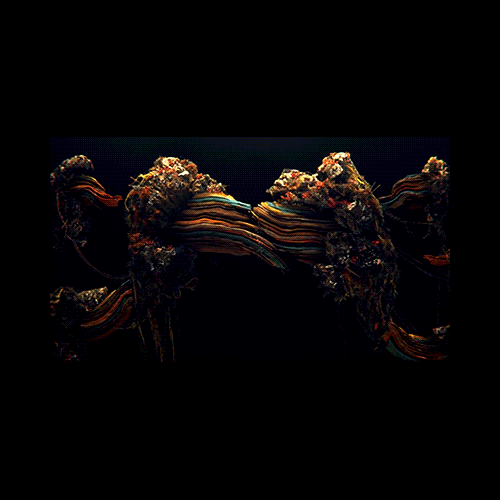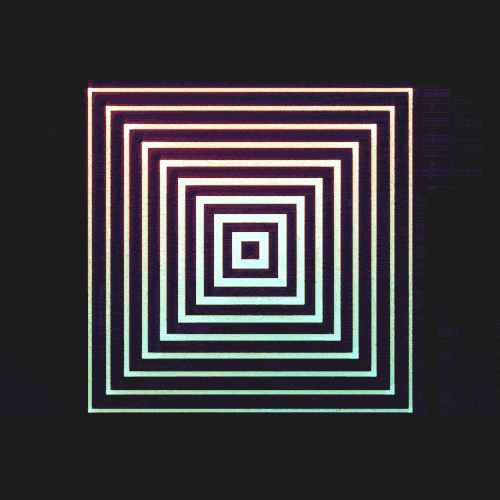![]()
Like everyone else I know, I kinda hate Facebook. Its oppressively sterile design, the annoying stream of endless updates from people I barely care about, the exhausting demands of online posturing: all good reasons to delete my account. Yet, here I am, practically drooling on myself while mindlessly scrolling through my feed—again.
I take solace in the fact that not everyone feels as trapped as I do on this damn “social networking” site. Because there’s a growing group of digital artists who’ve wiped the drool from their mouths, and are setting out to explore Facebook as a medium for creativity.
There are many ways to mine Facebook for material. Some, like the Lithuanian hacker Glitchr, resist the website’s uniform and limiting design by hacking its back-end codes—which manifests as Dada-esque ruptures in its normally pristine visual design. The result is surprisingly disconcerting.
Others, like the conceptual artist Ryder Ripps, use the website’s functions as a form of performance art—drawing attention to the fact that our Facebook presences are inherently performative anyway. “Using social media is like one long durational performance,” once said the artist An Xiao, whose Twitter-ified rendition of Marina Abramovich’s The Artist Is Present sparked a virtual debate between art critic Paddy Johnson and Hyperallergic’s editor, Hrag Vartanian on the merits of “Twitter art.”
Johnson’s chief criticism was that social media art isn’t meaningful enough, and during the course of my research, I uncovered many types of “Facebook art” that, admittedly, came across as gimmicky. This could be because of the medium’s relative novelty; artists using Facebook as source material are treading a path rarely taken, and stumbles are to be expected.
Or maybe it’s because many art world insiders hate the term “social media art” to begin with. Ben David, the editor at Art Net, once wrote, “this faddish obsession with “social media” is understandable…But at the same time, I find the chatter somehow sad, as if visual art’s power to inspire passion among a larger audience is so attenuated that it has to throw itself on whatever trendy thing is out there, to win some reflected glory for itself.” You can almost hear him sneering.
Internet artists themselves possess a certain degree of loathing for the medium. When I visited Ryder Ripps at his apartment in New York, he bluntly told me that he believes “social media is the poison of art.” And on another occasion, an artist I tried to interview for this piece refused to let me mention his works, claiming that
it didn’t fit into his “trajectory as an artist,” and that including his name here would “pigeonhole” him into a category that he didn’t want to be in. He berated me for a few more minutes before finally hanging up.
Despite all these exceedingly negative vibes, there is still a profusion of artists doing (to put it plainly) really cool shit with Facebook. Here are a few of the most interesting ways that artists all over the world are using Facebook as a medium, as source material, or as a starting point for critique*.
*This definition of what constitutes “Facebook art” is borrowed from Hyperallergic’s Hrag Vartanian. Thanks, dude!
1) Intentionally Creating Glitches and Bugs
Untitled (facebook series), part of an installation Sayuri Michima displayed on her Facebook. Image courtesy of tsnok.se.
Facebook’s static and uniform design is one of the most frequent complaints that artists hold against it. Some, like the Japanese artist Sayuri Michima and the Lithuanian hacker Laimonas Zakas (better known as Glitchr), experiment with computer glitches as a way to break up this dullness.
Michima deconstructs Facebook’s color scheme by spreading blocks of monochromatic fields all over her profile. These opaque rectangles of blue and white give off the icy spirituality I sometimes feel when gazing at a Minimalist painting. They also sit on top of vital pieces of information—like a commenter’s name, or the time stamp of a post.
Her erasure of language constitutes a kind of self-censorship, so it makes sense that her work was described by Tokyo Art Contemporary as “[dealing] with language as programming and organization as control.” By obscuring these streams of data and subverting them to her will, Michima is effectively causing her Facebook page to “fail” at what it was created to do.
Glitchr takes the opposite approach. Instead of causing Facebook to fail, he exploits bugs in the website that are already there. (And there are many—a guy even started a Pinterest page to document them.) Using Unicode characters, Glitchr tinkers with back-end coding to turn his profile page into an interactive minefield: clicking on certain links results in a series of unexpected glitches. Facebook’s clean lines explode into disconcerting chaos without warning.
Unsurprisingly, Facebook’s developers are quick to spot these glitches and fix them. Glitchr even jokes that he does their job for them. This cat-and-mouse game, however, only motivates Glitchr more to find alternate ways to continue rupturing his Facebook page. Gotta keep it fresh, amirite?
2) Recontextualizing Its Iconography
A collection of Facebook sprites by Ryder Ripps. Image courtesy of Ryder-Ripps.com.
Ryder Ripps, founder of the popular GIF site Dump.fm, is a prolific internet artist who frequently incorporates Facebook into his work. Ripps has done a lot of cool stuff with this medium, and in one of his projects, he singled out Facebook’s sprites—image compositions such as the “Like” or “Events” button—and compiled them in an online Sprites Gallery which is hosted on his personal website.
Ripps calls this practice a form of “internet archeology.” Meaning, by “digging up” these icons—which are probably the most frequently looked at, yet totally ignored images on the internet—Ripps suggests that a closer look might be warranted. After all, he says, sprites are important benchmarks that situate users in virtual space.
Kaja Cxzy Anderson obsessively screenshots her Facebook profile and posts them on Tumblr. Image courtesy of cxzy.tumblr.com.
Kaja Cxzy Anderson, who is based in Norway, similarly isolates Facebook’s overlooked elements and transfers them to another space—in her case, her Tumblr, which confusingly looks like a dystopian version of Facebook. Unsurprisingly, she and Ripps are internet friends.
Unlike Ripps, Anderson is interested in fleeting Facebook “moments,” like when a particularly bizarre ad pops up to the side of your feed, or when you change your relationship status from “in a relationship” to “single.” Anderson obsessively screenshots them all, and compiles them on her Tumblr page where they float around like specimens of virtual junk.
Another one of Anderson’s mundane screenshots.
“I like screenshot-ing things and taking them out of context… treating them like found poetry,” she tells me over a late-night Skype session. “I’m interested in social media as a kind of landscape, or a new form of impressionism. You see these colors and interactions that are used, and what you produce is a result of it.” Perhaps as a direct result of her self-scrutiny, or out of a fear or being “too serious” (the death knoll for an internet artist), Anderson laughs at what she just said. Right before we hang up, she quickly apologizes for being “cheesy.”
Image layering tool by Kaja Cxzy Andersen.
3) Hijacking Walls
What the art collective Finishing School’s residency on Chloe Flore’s wall looked like. Image courtesy of finishing-school-art.net.
Art curator Chloe Flores never wanted a Facebook account, but when peer pressure proved insurmountable, she launched a new residence space for her favorite artists—on her new account. The concept is straightforward: every month, a different artist has complete control over her profile to use it in any way they want.
The results have been varied. One month, artist Austin Young basically trolled Chloe’s friends by posting rambling and awkwardly personal status updates. On another month, Finishing School, a collective of artists, repetitively posted pictures of greying colors, basically boring everyone to death.
Flores’ About section stresses that: “Chloe Flores has not been conceived as a place for the display, presentation and exhibition of artworks per se, but rather as an alternative public space… for the exploration of collective authorship… and the performative gestures engendered in self-representation.”
If that’s a little TL; DR, what that means is that Flores’ wall isn’t meant to be seen as an online gallery, although it does display works of art. Instead, it functions more as a performative space, where the politics of an artist slipping in and out of a different identity should be factored in as well.
Another instance of wall hijacking is the rather infamous online protest orchestrated by the online collective The Jogging. It was called Ready Or Not It’s 2010, and in an open call to artists that went pretty viral, members of The Jogging expounded on “The manipulability of art museums’ Facebook walls [which] allows artists the chance to wrestle curatorial control back from institutions empowered by years of exclusionary practices.”
Their move: getting thousands of artists to post their own artwork on the Los Angeles Contemporary Museum of Art’s Facebook page—effectively spamming the shit out of it as a way to protest the institution’s pedagogical hierarchy.
4. Exploiting Their Own Privacy Settings
The download page for Ryder Ripp’s Facebook profile archives. Image courtesy of Ryder-Ripps.com.
Imagine letting the world peer into your Facebook account—including all those private messages to your friends where you drunkenly recounted awkward sex encounters, or bitched about a co-worker’s hygiene. Terrifying, right? That’s exactly what Ryder Ripps did in November of 2011, when he made his entire account downloadable as an archive.
When I asked Ryder how it went, he shrugged and said that no one, save for a few close friends, actually bothered to read it. But he wasn’t disappointed. In fact, he believes that in some cases, such as this one, “the idea of the performance is more important than the actual act itself.”
Earlier this year, the Berlin-based artist Constant Dullaart performed an event entitled “Terms of Service” at the New Museum. Dullaart ended up giving away his Facebook password as part of the performance (he tweeted about it right after, too). Like Ripps’ archive, Dullaart’s gesture didn’t really generate many ripples the following day. Whoever inherited the account hasn’t posted a single thing since that day, and the page has turned into a virtual graveyard.
Of course, these tactics only represent some of the ways Facebook art is developing. There are many more interesting ways the medium is being hacked, manipulated, or toyed with. Maybe it’s time we all moved beyond poking, and stick it a little to Zuckerberg.
@MichelleLHOOQ
![]()




























































